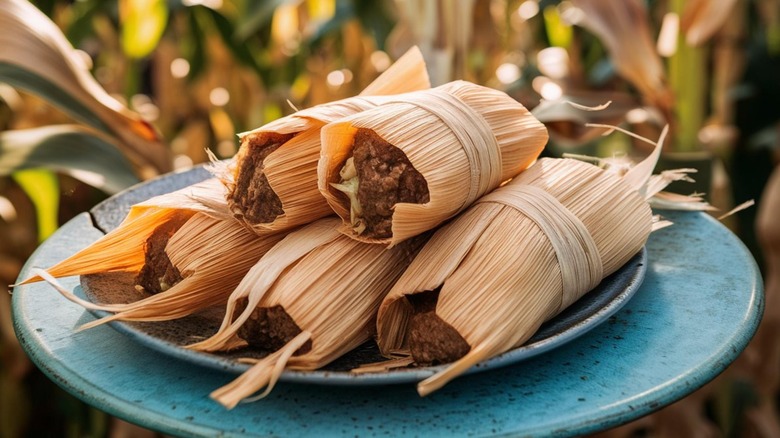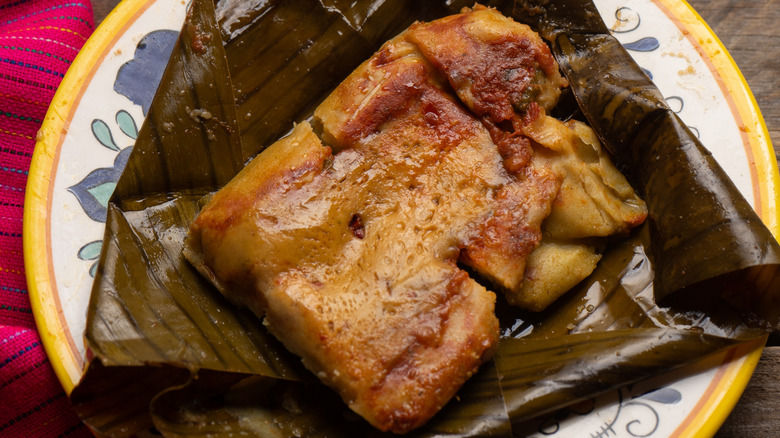The 2 Biggest Mistakes You Need To Avoid With Homemade Tamales
Nothing hits the spot quite like an authentic Mexican tamale recipe, and few people know tamales better than the renowned recipe developer and author of "Mi Cocina," Rick Martínez. That's exactly why we sought him out for tamale-making advice and asked about some of the biggest mistakes people make with tamales. Martínez tells Mashed, "I think probably overcooking or undercooking [them], or you run out of water."
Like a dumpling of sorts, tamales are tasty little pockets of dough wrapped around a filling, typically made with a combination of meats, beans, vegetables, or cheeses. Unlike other dumplings, however, tamales are made with masa (a type of dough made from ground corn) and wrapped in a banana leaf or corn husk. Once wrapped, tamales must be steamed, and that's where some folks start running into problems.
Since it can take up to an hour and a half to steam homemade tamales, you run the risk of running out of water during the steaming process, which could leave your tamales with a burnt taste. Adding enough water to reach — but not cover — the steamer basket is a good rule of thumb. To ensure that your tamales are properly cooked, Martínez tells us you need to actually get eyes on them. "I literally just set my timer for, like, three minutes and then open it up, and [if] nothing sticks to the husk and it's completely clean, then it's done," he says.
Don't let hot masa fool you
If you've never had a tamale (allow us to introduce you to the 16 absolute best tamales in the U.S.), the texture of a perfectly cooked tamale should be spongy and almost cake-like. When overcooked, however, the masa can turn soggy and begin to crumble.
That's why Rick Martínez recommends, once the tamales' cook time has finished, "Turn off the pot and let it sit for a few minutes, and then pull them out so they don't over-steam." Once the tamales are out of the heat, that's when you set a timer for three minutes, allowing them to rest a moment before seeing if they pass the inspection. "If you open it up and the masa is sticking to the husk or whatever you wrapped it in, then it needs a little more time," Martinez explains, adding, "So then you put it back in. I would cook it for another five minutes and then check it again."
You may be so eager to see the results that you don't want to wait three minutes before stealing a glance at the finished product, but as Martínez points out, that might give you some bad information. "The reason why you have to wait the three minutes is because even if the tamale's completely cooked, because [the masa is] so hot, it will stick to the husk and it'll ... seem like it's not cooked, but it really is."

